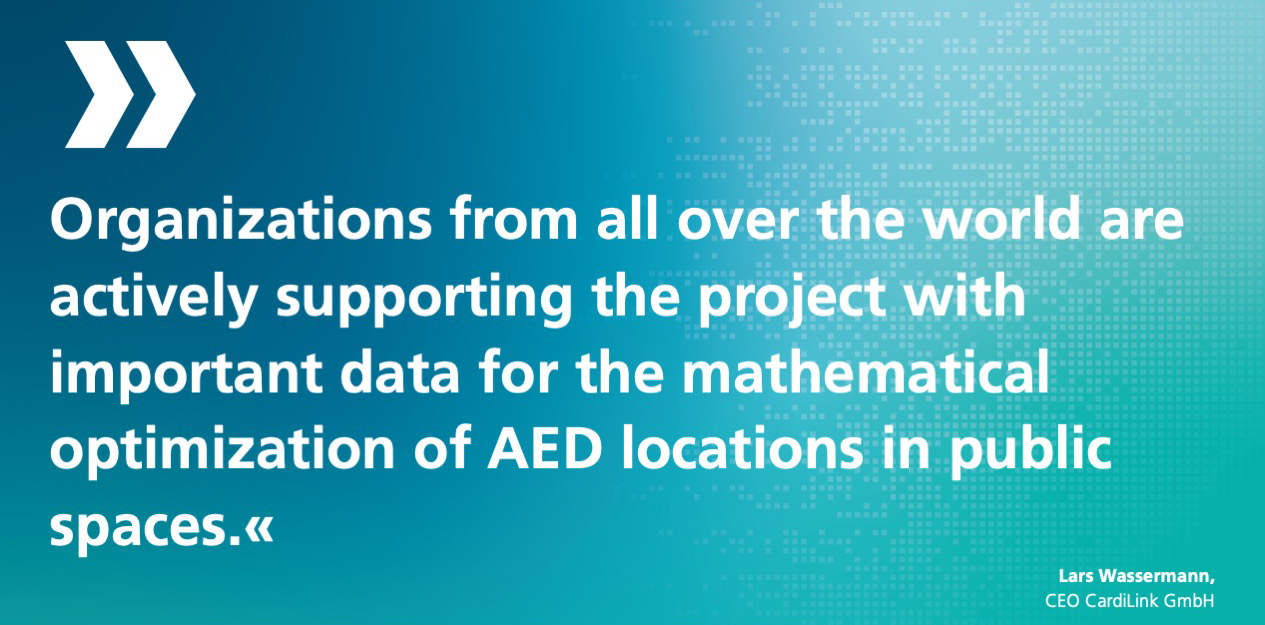From the current state to the optimal scenario
The locations of previously installed AEDs are determined and analyzed in terms of their availability and accessibility. Based on this, socio-demographic data and area clustering can be used to narrow down more precisely which areas do not yet have an AED in the vicinity. In addition, potential locations for defibrillators are identified based on various location factors such as visibility or maintainabilty. On the one hand, experience has shown that proven locations such as pharmacies or bus stops should be used. However, it may be necessary to identify additional locations for AEDS in order to ensure comprehensive coverage.
The data required for this, such as locations of already placed AEDs or points of interest (e.g. pharmacies or bus stops) as potential locations for newly placed AEDs, are often not freely available or are incomplete. This can be remedied by data imputation methods that derive the missing data from publicy available data sources, such as OpenStreetMaps. However, this data must also first be checked for quality and missing or incorrect data must be replaced with a suitable approach. Thus, one challenge is to create a complete, temporally and spatially accurate data basis by developing and applying suitable imputation methods. Depending on the quality of the available data, this imputation can range from simple, classical methods to complex, deep learning-based image classification algorithms. For a mostly complete dataset, for example, it may be sufficient to replace missing location data with their statistical mean. A more incomplete dataset, on the other hand, requires estimating the missing location data using complex algorithms from raw data such as images.
Mathematical optimization methods are then used to generate a recommendation for the smallest possible number of AEDS to be optimally placed, which ensures non-discriminatory, area-wide availability of the defibrillators on a mathematically sound basis. The integration of data regarding the status of the defibrillators guarantees that they are ready for use in an emergency.
Area-wide coverage of the city of Fürth graphically presented
The outcome of the project will be an interactive demo for optimal site placement of AEDs using the city of Fürth as an example. Through collaboration with various stakeholders in the field of health assurance in the city of Fürth, relevant location factors are considered from different points of view.
At the same time, however, special attention will be paid to transferability to ensure that the methodology can be applied in other cities.
Our project partner, CardiLink, plans to disseminate the developed optimization and imputation methods, both at the European level and in the USA or selected markets in Asia. This can lower barriers to heart safe city projects and ensure the increasing adoption of monitored AEDs.



